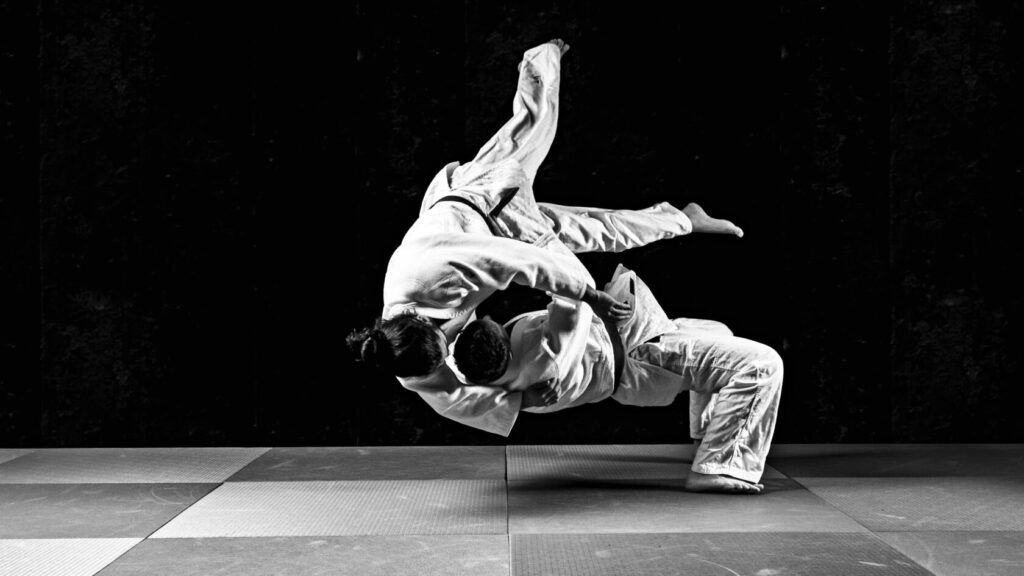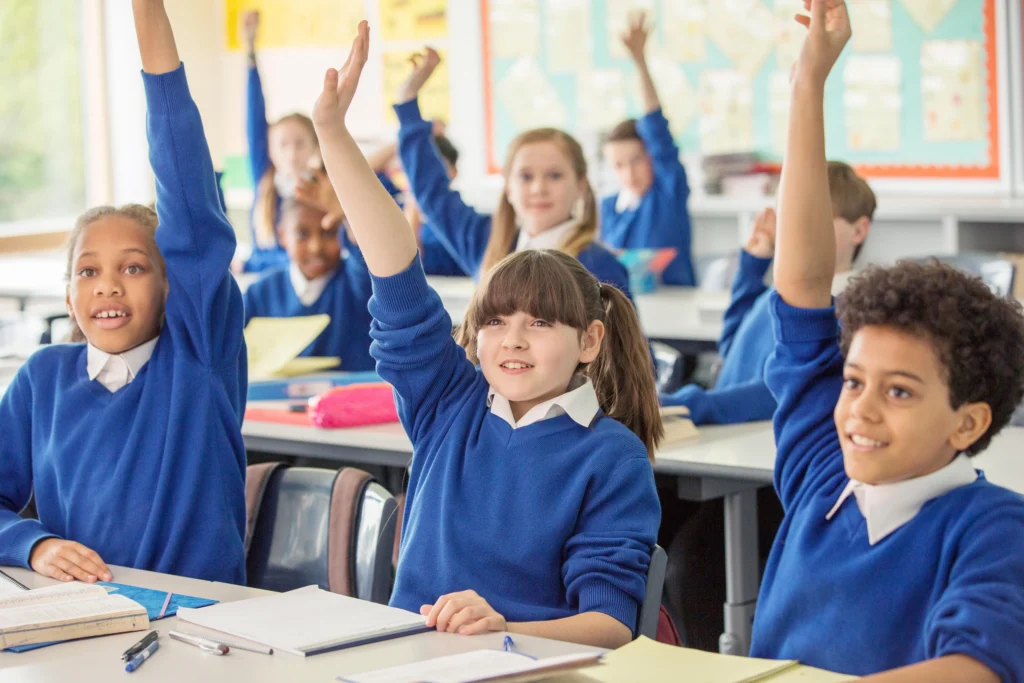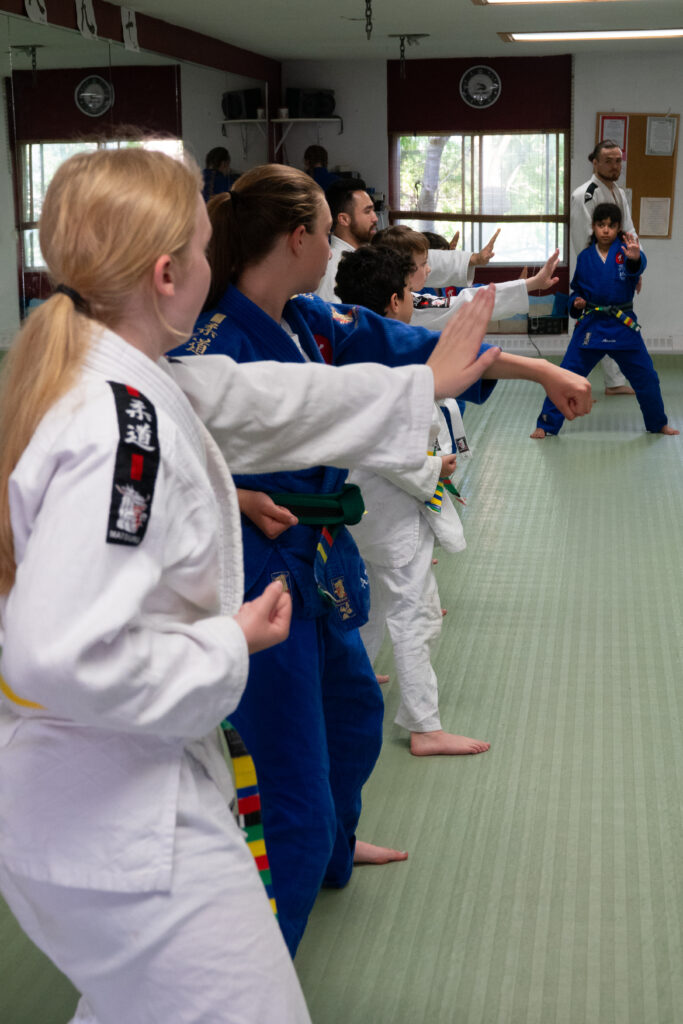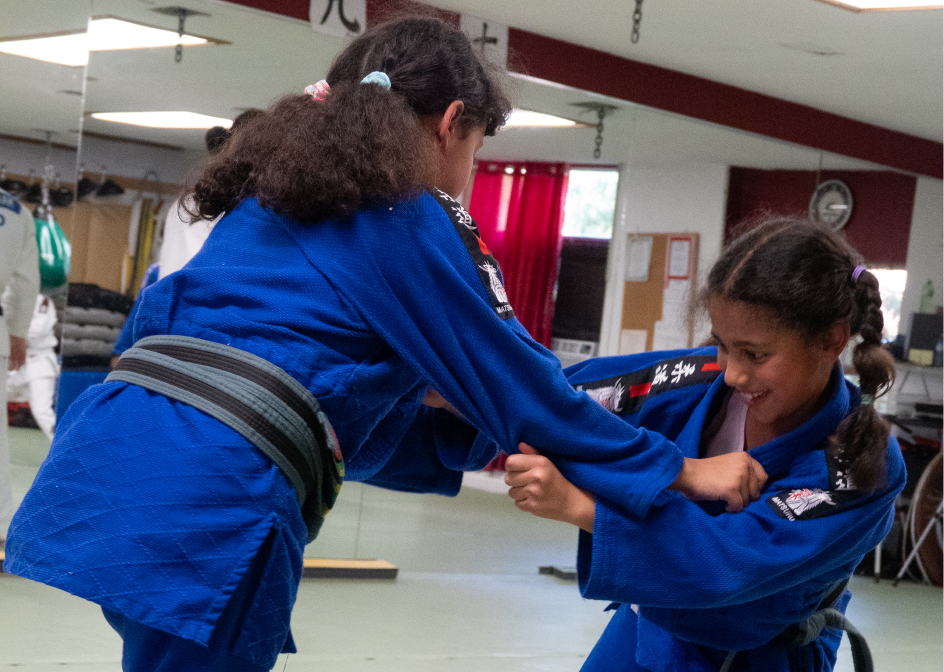Menu
Close
Menu
Close

Bullying affects countless children each year, but martial arts offers a powerful solution. Beyond teaching physical defence techniques, martial arts programs help children develop the mental and emotional tools to handle bullying situations effectively. Martial arts training builds confidence in children, making them less likely to be targeted by bullies while teaching them non-violent conflict resolution skills.
When children join a martial arts class, they enter an environment that values respect, discipline, and self-control. These core values, as taught at Tina Takahashi Martial Arts, not only prevent children from becoming bullies themselves but also give them the resilience to stand tall when faced with challenging social situations. Programs like those offered by Bullying Canada recognize that a multi-faceted approach to bullying prevention works best.
We’ve seen firsthand how martial arts transforms shy, uncertain children into confident individuals who carry themselves with purpose. This transformation doesn’t happen overnight, but with consistent training, children develop what many instructors call a “bully-proof” mindset as they learn to project confidence while maintaining control over their emotions and reactions.
Martial arts training offers children powerful tools to handle bullying situations through its core philosophies and practical skills development. These fundamentals create a strong foundation for both personal growth and effective bullying prevention.
Martial arts begins with teaching children that genuine strength comes from respect for oneself and others. We see how traditional martial arts philosophies emphasize that techniques should be used for protection, not aggression.
Students learn to bow to their instructors and training partners, creating a culture of mutual respect. This practice directly counters bullying behaviour, which stems from disrespect.
Our dojo incorporates formal codes of conduct that explicitly forbid using martial arts skills to intimidate others.
Children who practice martial arts develop a stronger sense of empathy, often becoming defenders rather than bystanders when they witness bullying.
Martial arts training instills discipline through consistent practice and adherence to specific movements and forms. Students learn patience as they master techniques that may take months or years to perfect.
The structured environment teaches children to control their emotions, especially during sparring sessions. Emotional regulation is a key anti-bullying skill that helps children respond thoughtfully rather than react impulsively.
Self-control extends beyond physical actions to include:
Children learn that true martial artists avoid conflict when possible, using physical techniques only as a last resort for self-defence.
Martial arts training builds physical confidence that translates to mental strength. Children develop better posture, eye contact, and body language that projects confidence and deters potential bullies.
Training sessions create opportunities for children to overcome challenges, building resilience that helps them face difficult social situations. We’ve observed that students develop a “can-do” mindset that extends beyond the training floor.
Mental toughness developed through martial arts helps children set boundaries and stand firm when faced with bullying behaviour. They learn to:
The combination of physical skills and mental preparation gives children practical tools to navigate bullying situations effectively.
Children who practice martial arts develop stronger self-image and inner strength through consistent training and achievement. This development helps them stand up to bullies and navigate social challenges with greater ease.
In martial arts training, we use a belt system that provides children with clear goals and visible progress markers. Each new belt represents mastery of specific skills and creates a sense of accomplishment. This structured approach to confidence building helps children develop positive self-talk and resilience.
Our instructors offer specific praise when students perform techniques correctly. Rather than generic compliments, we highlight exactly what they did well: “Great job keeping your guard up during that combination” or “I noticed how you maintained your balance during that kick.”
Group activities in class also foster peer support. When children see their classmates applauding their efforts, it reinforces their sense of belonging and value. This supportive environment is especially important for children who may face criticism elsewhere.
Martial arts equips children with the mental fortitude to resist negative peer pressure. Through regular practice, they learn to trust their own judgment rather than succumbing to group pressure.
We teach decision-making skills alongside physical techniques. Students learn to assess situations critically and make choices aligned with their values. This self-awareness becomes crucial when faced with peer pressure to participate in bullying or other harmful behaviours.
Children in martial arts programs develop what we call “respectful confidence” and the ability to stand firm in their beliefs without being aggressive or disrespectful. This balanced approach helps them navigate complex social situations without compromising their integrity.
The supportive community within martial arts classes provides positive peer relationships that can counterbalance negative influences elsewhere.
Learning self-defence techniques gives children practical skills and psychological security. Knowing they can protect themselves if necessary creates a foundation of confidence that extends beyond physical safety.
We focus on early teaching defensive rather than offensive techniques. Children learn how to create distance, deflect attacks, and escape dangerous situations. This knowledge reduces fear and anxiety about potential bullying encounters.
The physical nature of martial arts training also helps children become more comfortable with their bodies. As they develop coordination, strength, and control, their physical confidence grows alongside their mental resilience.
Importantly, we emphasize that physical self-defence is always a last resort. The greatest self-defence skill is conflict resolution using words, boundaries, and appropriate help-seeking behaviours to prevent physical confrontation entirely.
Martial arts training provides children with specific tools to handle bullying situations effectively. These techniques focus on both mental and physical preparedness while emphasizing conflict avoidance.
Children who train in martial arts learn valuable confidence -building skills that can deter bullying. This confidence shows in their posture, eye contact, and overall demeanour, making them less likely targets.
We teach students to use clear, firm verbal communication. Phrases like “Stop, I don’t like that” delivered with confidence can diffuse many situations before they escalate.
The “buddy system” is another effective strategy. We encourage children to stay with friends during vulnerable times, as bullies typically target isolated individuals.
Children also learn to identify safe zones and trusted adults. This includes knowing which teachers, counsellors, or school staff can help when bullying occurs.
Getting help isn’t a sign of weakness – it’s a smart strategy. We teach students that reporting bullying protects not just themselves but others who might be targeted.
Martial arts training instills deep respect for oneself and others. We emphasize that the strongest response to potential conflict is often walking away.
Students learn to recognize warning signs of aggression and practice de-escalation techniques. This includes staying calm, maintaining distance, and using non-threatening body language.
We teach the concept of “emotional regulation” – controlling reactions even when provoked. This skill helps children respond thoughtfully rather than reactively.
Children practice scenario-based training where they role-play difficult situations. This helps them develop muscle memory for appropriate responses when faced with real threats.
The martial arts philosophy teaches that true strength comes from restraint. Our students understand that avoiding unnecessary fights demonstrates wisdom, not weakness.
Physical self-defence is always the last resort. We emphasize that martial arts techniques should only be used when all other options have failed and physical safety is threatened.
Students learn appropriate responses that match the level of threat. This includes basic blocking techniques, creating space to escape, and calling for help when possible.
Preventing bullying through martial arts involves understanding the legal and ethical implications of self-defence. We teach children about proportional response and the concept of reasonable force.
After any confrontation, we instruct students to seek help from adults immediately. This ensures proper documentation and appropriate follow-up by authorities.
Regular practise of martial arts skills builds not just physical abilities but mental preparation. Students gain the clarity to make good decisions under pressure, whether that means walking away or standing their ground.
The principles and skills learned in martial arts training extend far beyond physical self-defence. These teachings become valuable tools that children carry into everyday situations, helping them navigate challenges with confidence and composure.
Children today face numerous stressors from academic pressure to social media. Martial arts provides powerful stress relief techniques that children can use anywhere. Deep breathing exercises learned in karate and judo classes can help calm nerves before a big test or presentation.
We’ve observed that students who practice martial arts regularly develop enhanced focus abilities. This improved concentration isn’t limited to the dojo it transfers to the classroom, helping with attention span and learning retention.
Physical activity during training releases endorphins, creating natural mood elevation. When feeling overwhelmed, children can draw on these experiences to centre themselves.
Simple meditation techniques taught in martial arts provide valuable mental tools for managing anxiety in any setting. These practices take just minutes but offer significant benefits.
The structured discipline of martial arts training naturally extends to academic environments. Students learn that consistent effort yields improvements a concept that applies equally to schoolwork.
We encourage our young practitioners to approach homework with the same focused dedication they bring to perfecting a martial arts form. This mindset shift often results in improved grades and study habits.
Respect learned in the dojo like bowing to instructors and training partners translates to better relationships with teachers and peers. Children understand the value of showing courtesy to others regardless of setting.
Time management skills develop through regular training and practice commitments. These organizational abilities help students balance schoolwork, martial arts, and other activities more effectively.
Goal-setting techniques from martial arts also transfer naturally to academic planning. Breaking down large projects into smaller, achievable steps mimics the belt progression system.
The confidence gained through martial arts training becomes a lifelong asset. Children who learn to stand up to bullies carry this self-assurance into adulthood.
We’ve witnessed how martial arts instills resilience teaching children to bounce back from setbacks. This perseverance becomes invaluable when facing life’s inevitable challenges.
Conflict resolution skills learned in martial arts help develop empathy and problem-solving abilities. Students learn to defuse situations rather than escalate them.
Physical fitness habits established in childhood often continue throughout life. Regular training builds healthy routines that contribute to long-term wellbeing.
The community connections formed in martial arts classes create support networks that can last decades. These relationships provide both social and emotional benefits beyond the training environment.
Bruce Lee’s philosophy extends far beyond his physical abilities. His approach to martial arts emphasized adaptability and personal growth concepts we incorporate into our teachings.
“Be water, my friend” remains one of Lee’s most powerful lessons. We encourage children to be flexible in their thinking and approach to problems, just as water adapts to any container.
Modern martial arts champions provide diverse role models for children. These figures demonstrate how discipline and dedicated practice lead to achievement in any field.
Many martial arts icons emphasize the importance of giving back to communities. We highlight these examples to show children how their training can positively impact others.
The balanced approach to life championed by respected martial artists shows children that physical, mental, and spiritual development are all essential components of true strength.
Martial arts training equips children with practical tools for addressing bullying situations through physical skills and mental resilience. Parents often wonder about specific techniques and approaches that make martial arts effective for bullying prevention.
What are the top techniques martial arts teaches to prevent bullying?
Martial arts teaches several key techniques that help children handle bullying effectively. The first is proper stance and posture, which signals confidence to potential bullies.
Verbal de-escalation is another important skill children learn. This involves using clear, firm communication to establish boundaries without aggression.
Basic blocking techniques give children the ability to protect themselves if physically threatened, while martial arts instills important values like confidence and respect that often prevent confrontations altogether.
Can practicing martial arts increase a child’s confidence in facing bullies?
Yes, martial arts significantly boosts children’s confidence in bullying situations. Regular training helps children develop physical competence and body awareness that naturally translates to greater self-assurance.
The progression system in martial arts, with belts marking achievement, provides concrete evidence of growth that builds confidence over time.
Many instructors report that martial arts can instil confidence that eventually shows in a child’s attitude and mannerisms, making bullies less likely to target them.
How does martial arts training influence a child’s response to bullying situations?
Martial arts training transforms how children respond to bullying through mindfulness and emotional regulation. Children learn to remain calm under pressure rather than reacting from fear or anger.
They develop situational awareness that helps them identify potential bullying situations before they escalate.
Most importantly, martial arts provides a framework for appropriate response – teaching children when to walk away, when to seek help, and as a last resort, when self-defence is necessary.
In what ways does martial arts promote respect and self-control among children?
Martial arts promotes respect through traditional practices like bowing to instructors and training partners. These rituals teach children to value others regardless of differences.
Self-control is developed through discipline-building exercises that require patience and focus, helping children understand the importance of managing impulses.
The dojo environment establishes clear boundaries and expectations, showing children how respect and self-control create a positive community where everyone can learn safely.
What role does martial arts play in developing a child’s ability to handle conflict?
Martial arts teaches conflict resolution by emphasizing that physical techniques are always the last resort. Children learn to assess situations objectively rather than emotionally.
Partner exercises help children practice negotiation and compromise while developing empathy for others’ perspectives.
Through martial arts training, children discover that true strength lies in avoiding unnecessary conflict rather than seeking it out.
How can parents support their children in using martial arts principles to deal with bullies?
Parents can reinforce martial arts principles by discussing dojo lessons at home and practicing verbal responses to potential bullying scenarios. This helps children internalize their training.
Creating opportunities for children to explain what they’re learning builds their confidence in articulating boundaries.
We recommend parents maintain open communication with our instructors about any bullying concerns, as we offer specialized support for bullied youth and can provide targeted guidance for specific situations.
To get your child bully proofed please go to: https://tinatak.com/about-us/



Hours of Operation:
Monday – Friday
8:00 a.m. – 8:00 p.m.
Saturday – Open Mats
2:00 p.m. – 3:00 p.m.
Recent Posts
Blog
The Beginner’s Guide to Starting Martial Arts: Essential First Steps for New Practitioners
Judo vs. Jiu-Jitsu: Understanding the Key Differences Between These Ancient Martial Arts
Why Martial Arts are Excellent for Child Discipline: Building Character Through Structure and Respect
How Martial Arts Teach Children Anti-Bullying Skills: Building Confidence and Self-Defence
Copyright © 2024 |
Tina Takahashi Martial Arts
Designed by
ElissDesign.com





